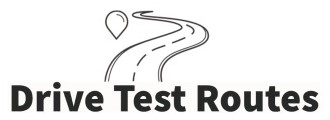As a driver, one of the most basic driving skills you can acquire is a good attitude towards other drivers. It is important to remember that you are in control of a vehicle that could potentially be a lethal weapon. Staying positive and patient are key.
Keep a constant watch on your surroundings and be aware of people and vehicles around you at all times. Check your mirrors frequently, and always check your blind spots by looking over your shoulder before making turns and lane changes. Knowing what is going on behind you is often overlooked, but it is extremely important to know whether cars behind you are too close, too fast, or trying to pass.
Remember that you share the road with others. Trucks, motorcyclists, cyclists, and pedestrians all call for your attention and courtesy on the road. Other vehicles have different needs. For example, trucks need extra stopping room and wider turning lanes; buses need to enter traffic from stopping lanes; and when passing cyclists in narrow lanes, they should be given the full width.
Circle Checks and Getting Behind the Wheel
Before getting behind the wheel, make sure the vehicle is in good working condition. Get in the habit of doing a daily “ circle check ” — a 10-point check of your vehicle — before leaving.
Circle Check for Cars, Small Trucks, and Vans
Outside:
- Tires all fully inflated.
- Headlights and signal lights clean and working.
- All windows and mirrors clean.
- Licence plates visible.
- Wipers in good condition and washer fluid topped up.
- Brakes working properly.
- Horn working.
Inside:
- Adjust your seat.
- Buckle your seat belt and make sure your passengers are buckled in.
- Adjust your mirrors, test the lights, and test the windshield wipers.
- Check your gauges for fuel, oil, battery, and engine temperature.
- Turn on your defroster or heater, as needed.
Circle Check for Motorcycles
- Tires fully inflated with good tread.
- Brakes working properly.
- Clutch and throttle working smoothly.
- Cables free of kinks and breaks.
- Headlight, tail, brakelight, and turn signals clean and working.
- Horn working.
- Adjust and clean mirrors.
- Check gas and oil levels.
- Check drive chain condition and tension.
- Remember to buckle your helmet securely.
Techniques for Time of Day and Weather Variations
Clear weather usually means good visibility, but drivers seldom have perfect conditions. Whenever it is harder to see, harder to stop, or harder to handle the vehicle, you will need to take extra care. Your driving practice should include time under a wide range of conditions.
Night driving brings extra risk. It is harder to see, to tell how fast other traffic is moving, and to judge how far away things are, which means drivers take longer to react. Using high beams whenever appropriate makes it easier to see ahead. Remember to switch to low beams for traffic approaching from the opposite direction.
At dawn and dusk, the sun is low on the horizon. The sun creates glare and makes it difficult for you to see others and for them to see you.
Rain makes roads slippery. Tires cannot grip the road as well and it is harder to see. In the rain, braking, turning, changing lanes, and passing should be smooth and steady.
Fog makes it hard to see and be seen. Go slowly and cautiously. Use low beam headlights.
In strong winds, it is important to slow down and hold the steering wheel firmly. Winds can also bring blowing snow, dust, and dirt that affects visibility.
Snow, ice, and freezing rain mean slippery roads, longer stopping distances, and poor visibility. Slow down and leave more space between vehicles.
Techniques for Various Road Conditions
Unless accompanied by a licensed driving instructor, new drivers in Class G1, must not drive on any 400-series highway with a posted speed limit greater than 80 km/h, the Queen Elizabeth Way, Don Valley Parkway, Gardiner Expressway, E.C. Row Expressway, or Conestoga Parkway.
New motorcycle drivers in Class M1, must not drive on a highway with a speed limit of more than 80 km/h, except on Highways 11, 17, 61, 69, 71, 101, 102, 144, and 655.
On residential roads, cyclists, pedestrians, children, animals, and parked vehicles are all around you. Be prepared for the unexpected.
Multi-lane roads have more lanes of traffic, both beside you and in the opposite direction. Be prepared for intersections, signal lights, stop signs, and railway crossings.
The unexpected happens very quickly in heavy traffic. Check your mirrors, keep a safe distance from the car ahead, and do not take unnecessary risks. Slow-moving traffic, sudden stops, and fewer chances to pass make it very important to keep your eyes on what is going on around you.
On gravel and dirt roads, ruts, potholes, and ridges mean difficult steering and braking. Slow down on loose surfaces because traction is poor.
Light traffic may invite a carefree attitude. It is important to obey speed limits and not take unnecessary risks.
About the author

